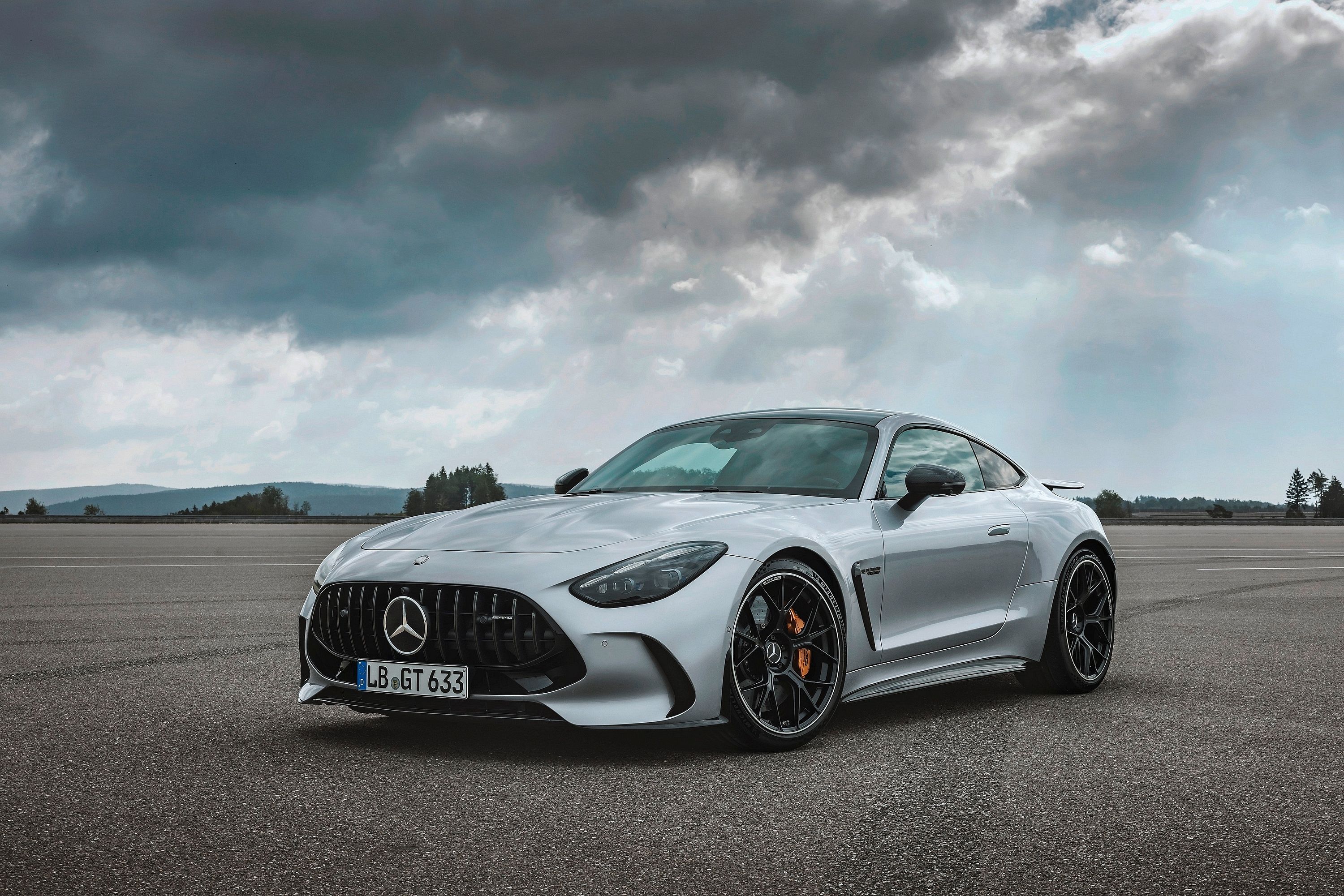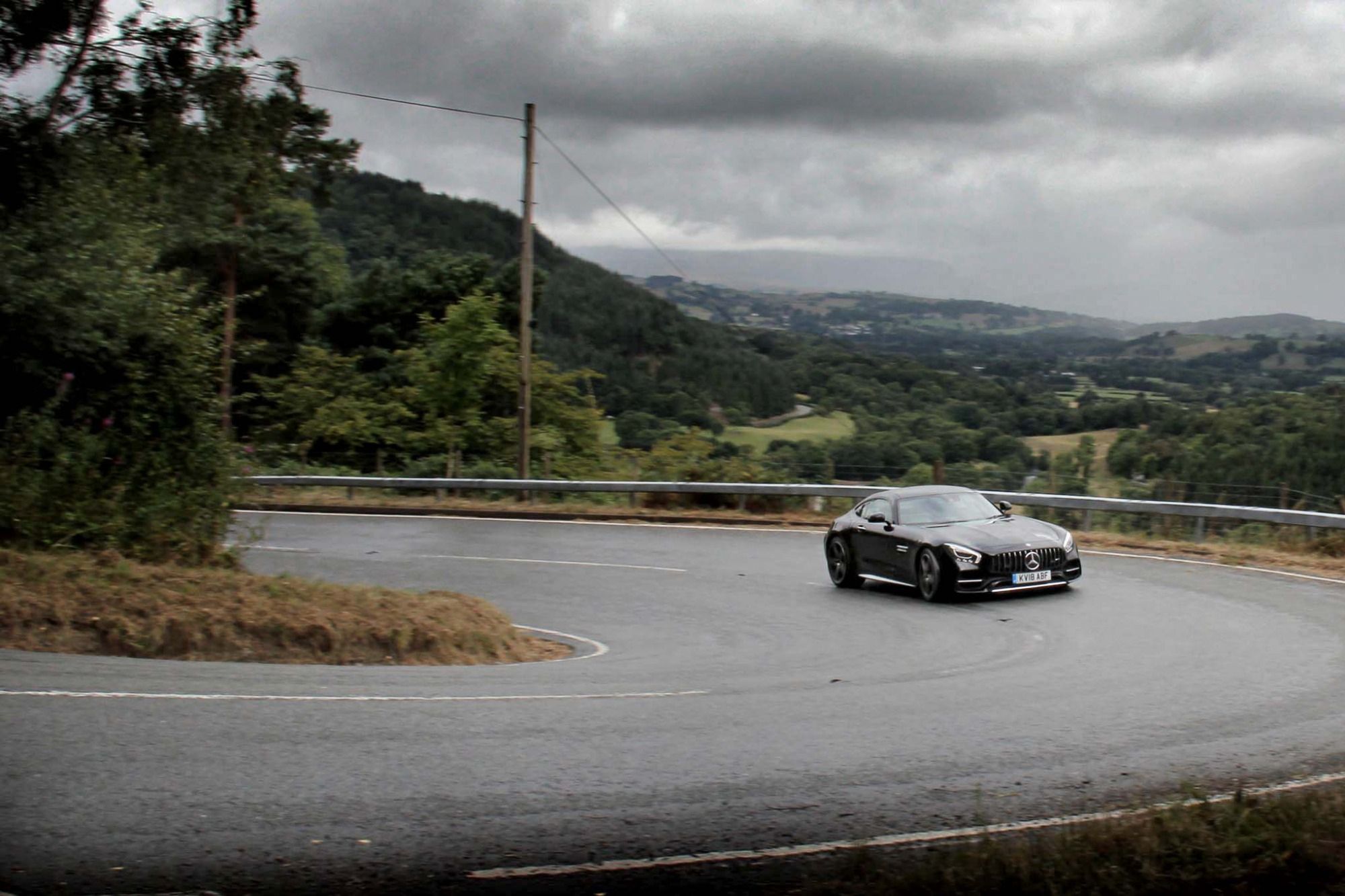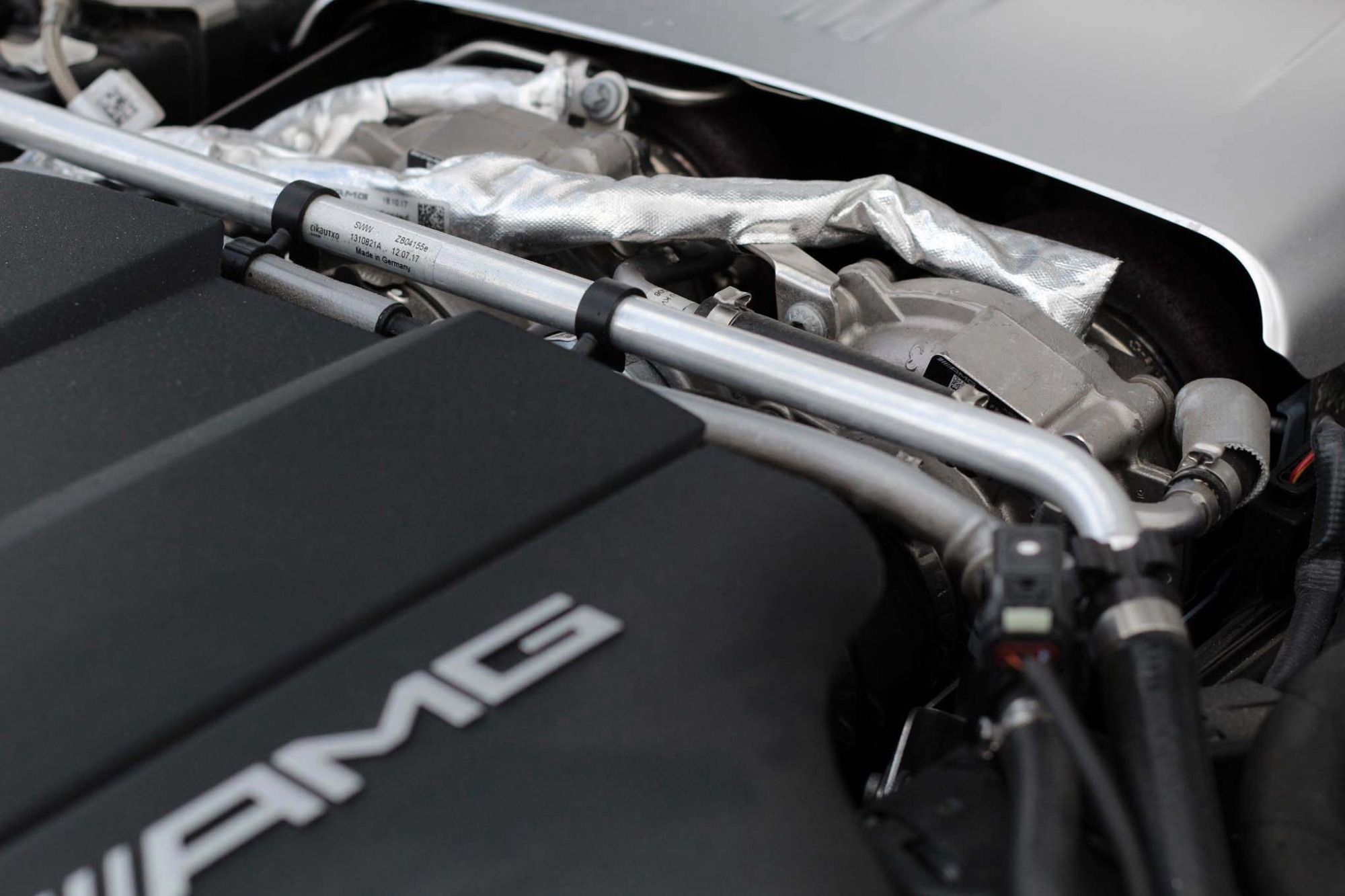2019 Mercedes-AMG GT C Coupe Test Drive Review: The Best AMG GT Yet?
What does the AMG GT have to do to earn our respect? I've long wondered why this car seemingly gets such a lukewarm response from reviewers when, seemingly, there's not a lot to dislike.
There's that engine for starters. I remember being at an AMG event when they unveiled the twin-turbo, 4.0-liter, 'hot V' V8 to the press, the GT at this point little more than a test mule burbling around the Affalterbach factory grounds. Just in case we doubted the AMG team are engine guys to the core we were obliged to listen to recordings of various V8s from its back catalogue before the new engine was presented to us, the point being that we had nothing to fear about AMG downsizing and going turbocharged.
And we didn't. In dry-sumped M178 form for the GT (it's known as the M177 in the rest of the range) this is one of the great engines of the modern era, blessed with the good bits of big-cube V8s in terms of natural throttle response and the best of the turbocharged age with its sledgehammer torque delivery and huge power reserves. Where turbocharged sixes of various types found in most rivals proportionally lean harder on forced induction AMG's insistence on staying true to the V8 means it maintains its trademark power advantage in whichever sector it happens to operate, the sounds and sensations of this engine always center of attention whichever car it's fitted to.
Nowhere more so than in the GT. It's pretty much there with you in the cabin, thanks to the front/mid positioning and that giant transmission tunnel squeezed in between the seats. It's in your ears (and those of anyone in the vicinity) from the moment you hit the start button. It's a constant rumbling presence, whether you're tickling through town or thundering down the freeway. And the power it places under your right foot remains utterly addictive.
In the GT it's centerpiece to a compact and balanced sporting coupe of the classic mold, driving the rear wheels through a transaxle mounted dual-clutch transmission connected to the engine via a rigid torque tube. It's got double wishbone suspension all round, hydraulically assisted steering, all the driver modes and configurability you would wish for and – of course – a soundtrack that never grows old. And it puts this to the road in a muscular, overtly rear-driven manner. Come on people, what's not to like?
The odd, rear-set driving position it inherited from the related SLS is one common criticism. That sensation isn't helped by the fact the steering has always felt a bit light, this, the rear-set cabin and the poor visibility making it hard to place on the road. But I'm here to fight the GT's corner, especially fresh from 24 hours in the GT C Coupe that makes a strong case for being the best version yet built. Better even than the GT R? I'd argue it might just be.
I've been lucky enough to drive pretty much all the GT variants that have come since the car first launched at Laguna Seca in 2014. One of my favorites is the 469-horsepower base model with the mechanical limited-slip differential and passive suspension, these being my first taste of the Multimatic DSSV dampers used by the Aston Martin One-77, Camaro ZL1 1LE and others. To me this was the best expression of the GT's back to basics, traditionalist vibe.
Then I got in the GT C and was forced to think again. For starters, this car just looks awesome. The major changes for this car include the widebody rear fenders, which increase the car's overall width by 2.25 inches. This is to contain wider rear tires and the GT R's rear-wheel steering mechanism but it also makes better sense of the GT's proportions. Vents on the rear bumper and between the rear lights meanwhile accentuate the car's width and broad-shouldered muscularity.
Then there's the extra power. With slightly lower compression and a bit more boost from the turbos the GT C has 550 hp, down a touch on the GT R's 577 hp but a useful gain over the GT S's 515 hp. Torque is closer between the three, the GT C boasting 502 lb-ft from just 1,900 rpm.
The modifications don't sound like much but add up to a very different character on the road. On-paper gains aren't huge, amounting to a tenth off the GT S's 0-60 mph time (now 3.6 seconds) and a little more top end, 193 mph playing the GT C's 197mph.
Equipment is generous too, the GT C getting many of the toys you have to pay extra for in the rest of the range. These include everything from the Dynamic Plus package with its active engine and gearbox mounts, stiffer suspension and retuned steering to Exclusive Nappa leather trim and a unique five-spoke design for the 19-inch/20-inch wheels. Sure, you don't get the fancy nine-stage traction control, titanium exhaust or active aero of the GT R and it weighs a little more. But you're basically getting that car's character in a more all-round package. And that's the key.
Because the GT C unleashes the swagger in the AMG coupe, and in fine style.
At first it all feels a little bit odd. The distance from the front wheels requires acclimatization, especially given the increased response of the rear-wheel steering. This doesn't help the already light feel to the wheel and you can actually feel the back of the car pivoting around you, meaning you quite often over steer into corners (in the literal sense) and have to learn to calm your inputs.
You still can't feel a whole lot through the front wheels but the centered weight distribution and bite at the front axle is something you learn to trust and lean against, at which point the GT's natural balance becomes apparent. And you can really, really start to push it.
Given how much power is going to the rear wheels the traction is really impressive, the electronically controlled locking differential cleverly working with the stability control to put that grunt to the pavement. It's helped by the GT's flat cornering stance, that stiffness not great for comfort but really showing class when the roads get twisty and the cambers a little more rowdy. You might not think it given the size and width but the GT C is a formidable canyon car capable of rapid-fire direction changes without need to lift foot from throttle. Unless it gets really bumpy, at which point the AMG can get a bit lively.
As such it's worth playing with the various settings to find one that works best for wherever you happen to be driving, the usual progression from Comfort through Sport and Sport+ to Race ramping up dampers, throttle response and gearshift speed in the usual way. You can adjust all these parameters independently too but the best option is to configure your Individual mode, my choice for this being manual gears, ESP Sport, Race for the engine and either Comfort or Sport for the dampers.
In the old days AMGs were amusingly unruly but since switching to active differentials a more mature, traction-led character has emerged. And thanks to that natural balance you can lean on the throttle hard in the GT C and not even see a flicker from the stability control, at least in the dry. If you really provoke it or find yourself on a slippery surface it'll break loose but it does so smoothly and predictably. Sure, all-wheel drive will see a 911 Turbo or Audi R8 disappear into the distance in the wet. But the GT C isn't as one-dimensional as some may think and that sophisticated chassis and powertrain, paired with natural balance, count for a lot. You may not be the fastest in the GT. But chances are you'll be having too much of a riot to care.
And when you're back down to sensible speeds and cruising through town the AMG's looks, sound and sheer presence all count for a lot. The package may have required a little fine-tuning around the edges. But in the GT C I'd argue it's finally come of age.



